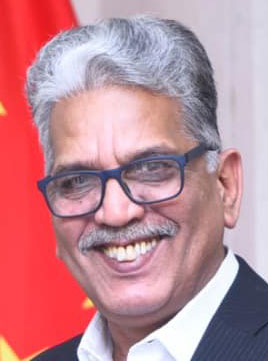On the women’s front, we have some good news. It is predicted that a female judge will establish new ground. The Judicial Commission of Pakistan has proposed Justice Ayesha Malik, a judge on the Lahore High Court, for elevation to the Supreme Court. Following ratification by a nonpartisan parliamentary committee, her nomination will be formally announced.
The announcement has caused quite a commotion, as one might expect. When the gender barrier has been broken in any aspect of public life, this has happened before. Remember the ruckus that greeted Benazir Bhutto’s arrival on the political stage as Prime Minister after the 1988 elections?
In this context, a topic that has been addressed in some areas – certainly not obscurantist corners – provides food for thought. While many have hailed the move as a victory for women, others have questioned whether the gender mix of the judiciary has any bearing on its performance. A good judge, whether a woman or a man, will always decide a case within the bounds of the law and justice.
Justice Nasira Iqbal, a retired judge from the Lahore High Court and a distinguished jurist in her own right, was unequivocal in her assessment. She emphasised explicitly that diversity is enriching and should be welcomed. To be clear, gender diversity in all professions should be encouraged for the simple reason that men and women have distinct viewpoints on the same topic, regardless of how similar they are otherwise. As a result, both must be taken into account.
In patriarchal society, the female perspective is absent. What concerns me is the lack of acknowledgement of the reality that every issue affecting women has a female perspective that cannot and should not be ignored. It brings a healthy sense of balance to all discussions. This is essentially at the heart of the issue that was acknowledged in the 1960s, when Pakistan saw an inflow of women in many professions. The judiciary, which is a critical field for women, has been slow to change.
A law may be gender-neutral and not discriminate between men and women. However, different judges may read it differently. Biases, knowledge of numerous events, and personal experiences all play a role in this situation. As a result, decisions reached by panels of many judges are not always unanimous. There may be some dissenting judges on the bench, but the majority view will prevail.
When there is a lack of female representation, it is the generally female perspective that is missing. When Nasira Iqbal claimed that a woman understands what is in another woman’s heart, she may have had this in mind.
Men have their own viewpoints, albeit those who have been exposed to the difficulties women confront are sympathetic to their plight. In a patriarchal society like ours, this cannot be expected for all males. Many male judges have prejudices towards women, which are frequently shown by their comments during a case’s hearing.
Remember our all-male benches’ humiliating treatment of Mukhtaran Mai, who was gang raped on the orders of an all-male village jirga? Judge Nasir Aslam Zahid, a retired chief justice of Sindh, informed me that until he became chairperson of the National Commission on the Status of Women in 1996-97, he had no idea that women had a different perspective than men. The commission included prominent legal female figures such as Asma Jahangir, Shahla Zia, and others. Engaging and debating with them was eye-opening for Mr Zahid, who discovered how a woman may interpret the same rule differently than he did. Even when he was younger, he had not been so sensitised.
This applies to all vocations. The more patriarchal a culture is, the less evident the woman’s perspective becomes. It’s no surprise that so much effort is being put into sensitising men in a profession where there is a need to raise knowledge of women’s perspectives. As a result, we continue to hear about gender training for lower court judges, magistrates, police officers, lawyers, and lawmakers.
That would explain why there is a need to improve women’s representation in all areas of life. Although Nasira Iqbal suggests that each court have five female judges, the number should be higher. It is widely assumed that in a position of power, where women are vastly outnumbered by men, they will be unable to effectively support women. The goal should be to reach a critical mass so that the change process may continue without being slowed down. This is believed to be 40%, a staggering ratio that has never been achieved anywhere else in the world save in a few industries in Scandinavian countries with a strong reputation for gender equality. By taking up the cause of social justice, Justice Malik could set a precedent.
Sign in
Welcome! Log into your account
Forgot your password? Get help
Password recovery
Recover your password
A password will be e-mailed to you.






